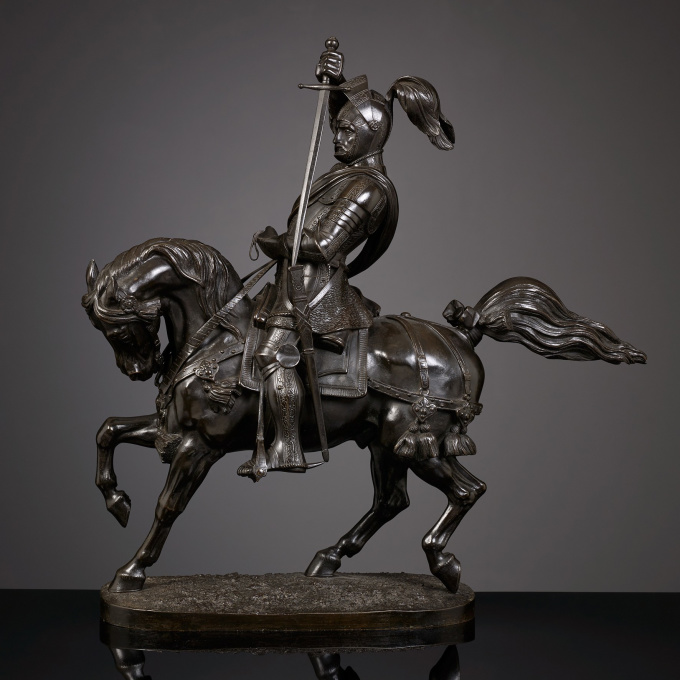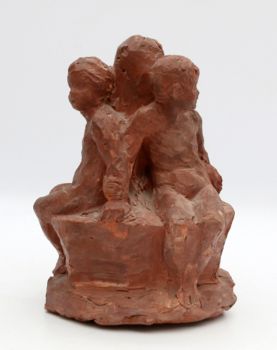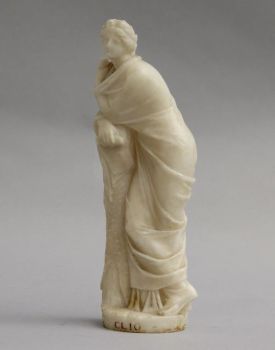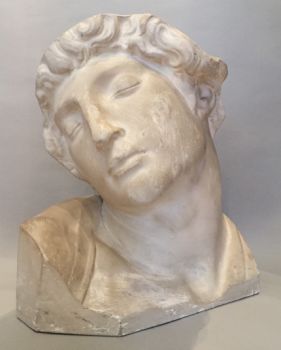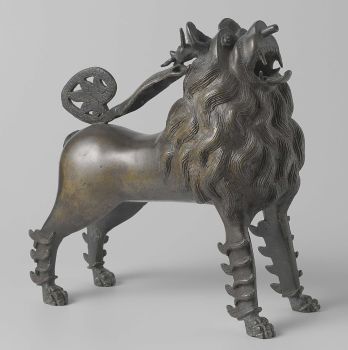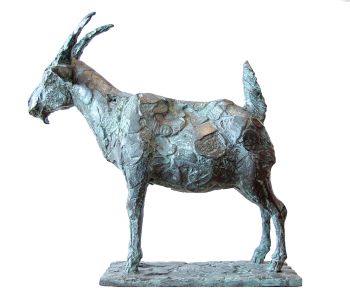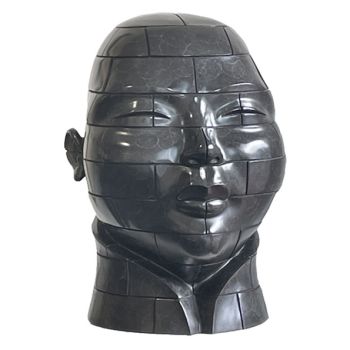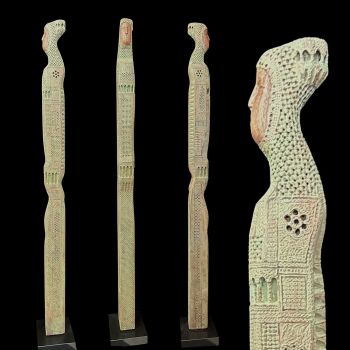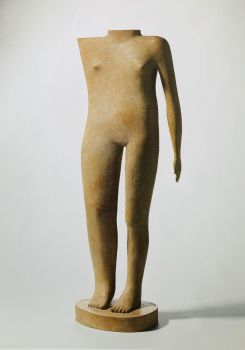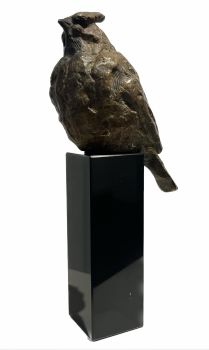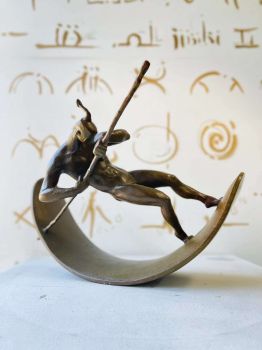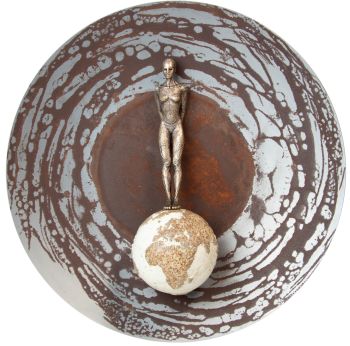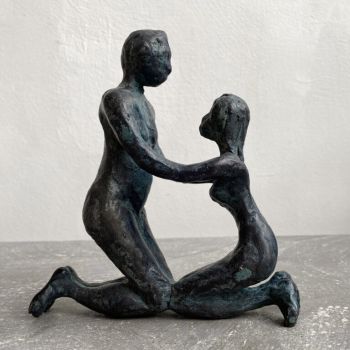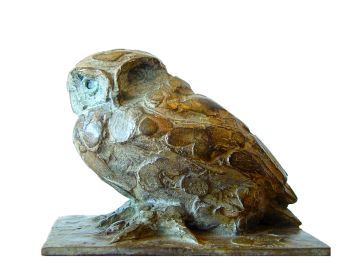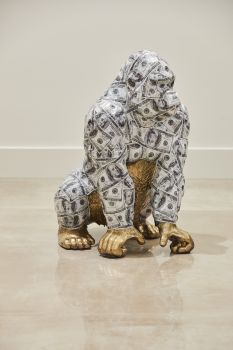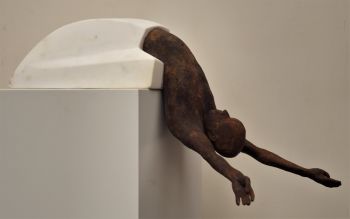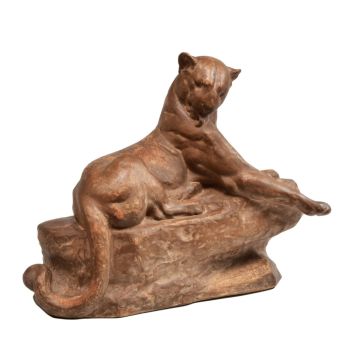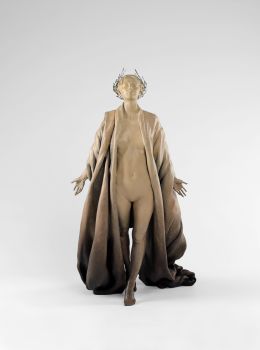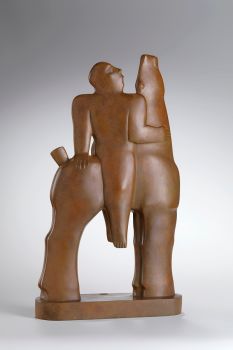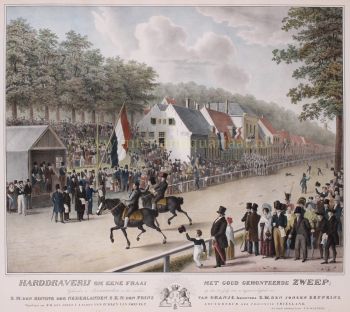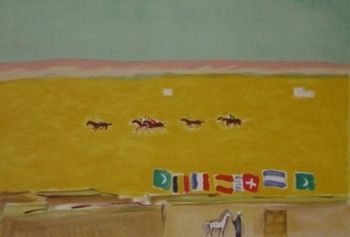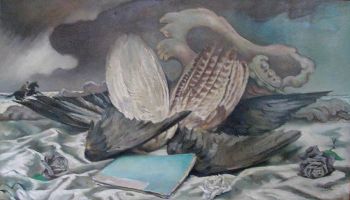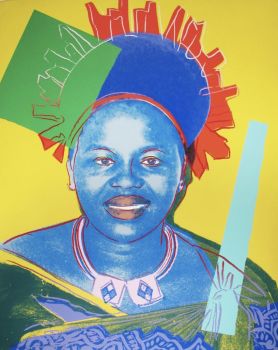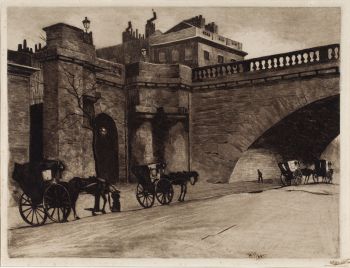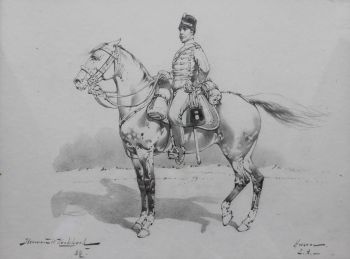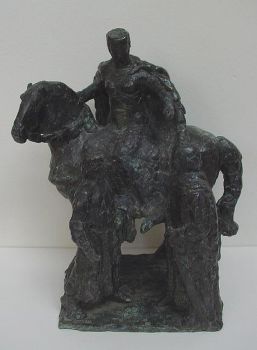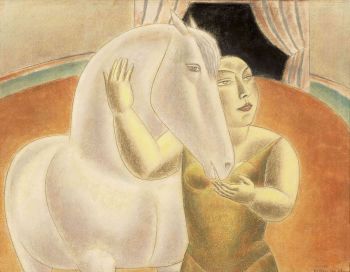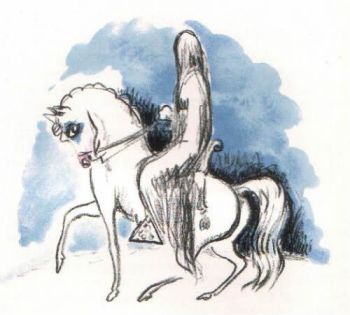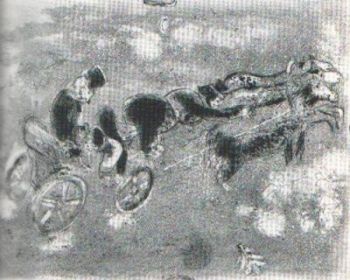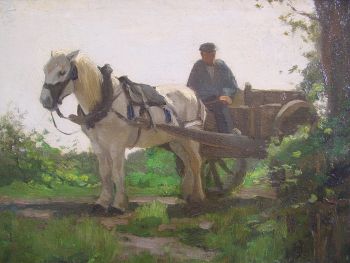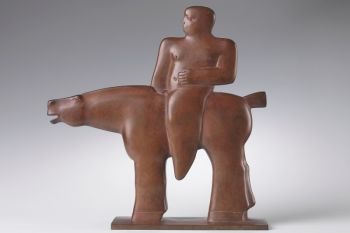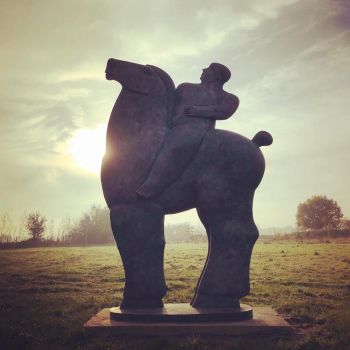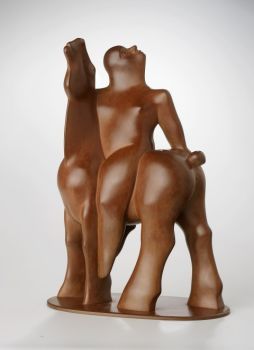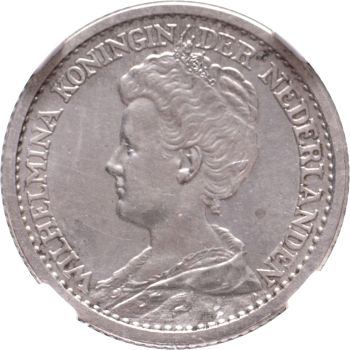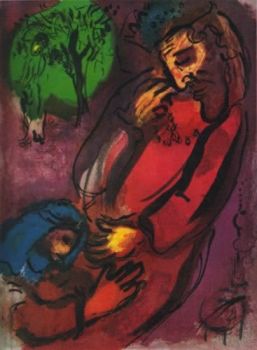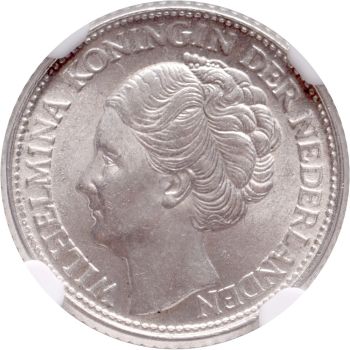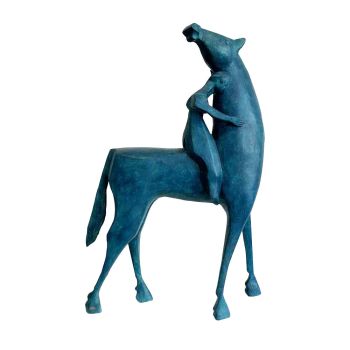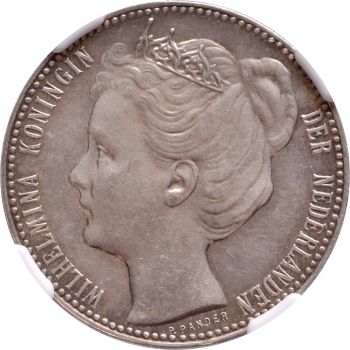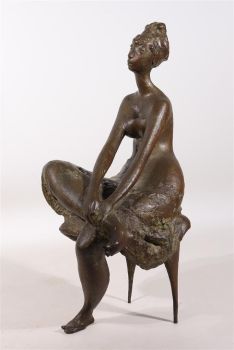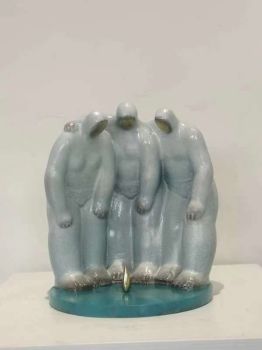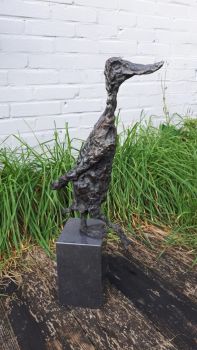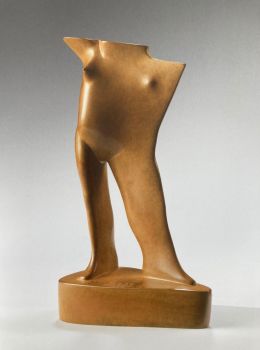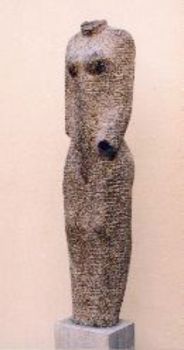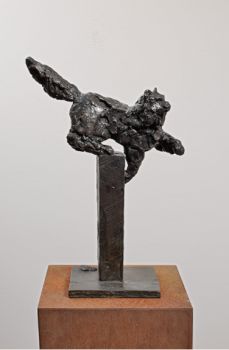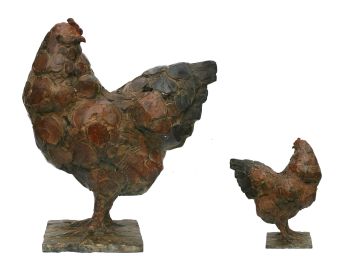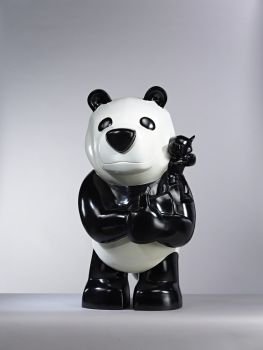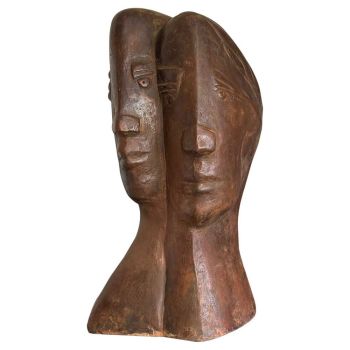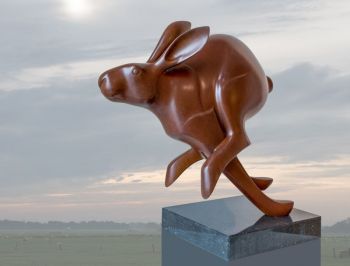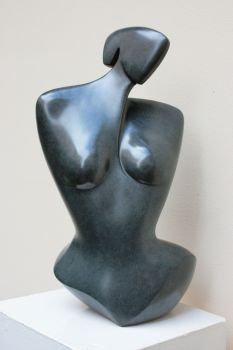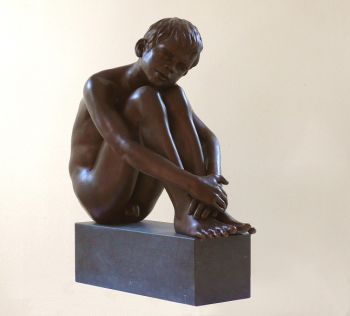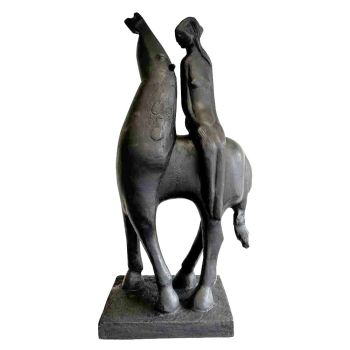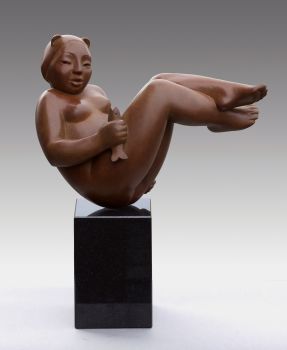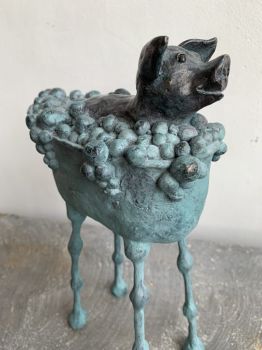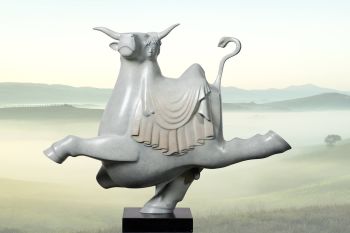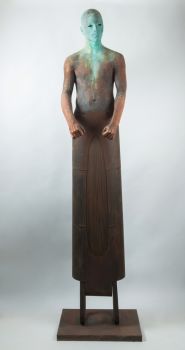Estátua equestre de Emanuel Philibert de Savoye 1836 - 1840
Carlo Marochetti
BronzeMetal
56 ⨯ 55 ⨯ 26 cm
Atualmente indisponível via Gallerease
- Sobre arteEmanuel Philibert
Emanuel Philibert duke of Sovay, also called Testa di Ferro (Chambéry 1528 – 1580 Turin), was the only child of Charles III of Savoy and his wife Beatrix of Portugal that survived childhood. Emanuel Philibert succeeded Charles III after his death. In 1536, though, he lost his land under the French occupation. Nevertheless, Emanuel Philibert stayed loyal to the house of Habsburg. In 1551 he lead the defense of Barcelona, withstanding the French and earning his sobriquet “Ironhead”. Later in 1551 Emanuel Philibert was awarded the title duke of Savoy, despite the fact that he did not have a duchy. From 1555 to 1559 Emanuel Philibert was governor of the Austrian Netherlands, in service of his cousin Filips II. Emanuel Philibert duke of Savoy was a contemporary of William of Orange.
Carlo Marochetti (1805 – 1867)
Carlo (Charles) baron Marochetti was born in Turin in 1805, but grew up in Paris as a French citizen. After he finished the Lycée Napoleon Marochetti was educated at the École des Beaux Arts. He also spent some time in Rome. His first tutors in sculpture were François Bosio and Antoine-Jean Gros. From 1829 onwards Marchetti is gaining appreciation. Famous monuments of Marochetti can be found in England (among others, Richard Lionheart near Westminster), France (Théophile de la Tour d’Auvergne in Carhaix) and Italy (Emanuel Philibert on the Piazza san Carlo in Turin).
The commission for the equestriam statue of Emanuel Philibert came from king Charles Albert of Savoy, as a tribute to his ancestor, and to commemorate the military audacity of his dynasty. Marochetti made the statue in 1838 in Paris. It was his first major assignment and his first equestrian statue. Before the statue was put on its intended position in Turin, it was exhibited on the courtyard of the Louvre. This work was the breakthrough of Marochetti as a sculptor. After this assignment others followed, like the equestrian statues of the Duke of Wellington and Richard Lionheart.
The popularity of the statue of Emanuel Philibert led to the production of reduced copies, like this one, as soon as 1838. - Sobre artistaCarlo Marochetti nasceu em Turim, mas foi criado em Paris como cidadão francês. Seus primeiros professores foram François Joseph Bosio e Antoine-Jean Gros em Paris. Lá, sua estátua de Uma jovem brincando com um cachorro ganhou uma medalha em 1829, e seu anjo caído foi exibido em 1831. Entre 1822 e 1830, ele estudou principalmente em Roma. De 1832 a 1848 viveu na França. Em Paris, fez um painel representando a Batalha de Jemappes pelo Arco do Triunfo, o altar da Igreja da Madeleine e o túmulo de Vincenzo Bellini no Cemitério Père Lachaise. Enquanto vivia em Paris, ele também criou o monumento equestre de Emmanuel Philibert, que fica em uma praça central de Turim. Ele seguiu o rei francês Luís Filipe para o exílio no Reino Unido após a queda da monarquia de julho em 1848. Ele passou a maior parte de seu tempo desde então até sua morte em Londres. Ele morava em Onslow Square e tinha um grande estúdio e sua própria fundição nas proximidades de Sydney Mews. Entre suas principais obras estavam as estátuas da Rainha Vitória, Colin Campbell, 1o Barão Clyde (erguido em 1867 em Waterloo Place) e o Rei Ricardo Coração de Leão. O Richard Coeur de Lion (estátua) foi exibido na Grande Exposição, e uma cópia de bronze foi feita em 1860 para ser exibida em frente ao Palácio de Westminster, onde permaneceu desde então. Sua estátua de Robert Stephenson (instalada em 1871) ainda está de pé no pátio da Estação Euston. Ele fez um busto de William Makepeace Thackeray para a Abadia de Westminster. Ele também criou as efígies reclinadas de mármore para o túmulo da Rainha Victoria e do Príncipe Albert no Mausoléu Real de Frogmore em Windsor Great Park e a estátua na Coluna Comemorativa do Duque de Wellington fora da Stratfield Saye House. A partir de 1864, ele colaborou com Sir Edwin Landseer nos quatro leões de bronze a serem colocados ao redor da base da Coluna de Nelson em Trafalgar Square, e os lançou em sua fundição. Como escultor favorito da Rainha Vitória, ele foi contratado para fazer a figura sentada do Príncipe Albert para o Albert Memorial em Kensington Gardens. No entanto, a primeira versão foi rejeitada pelo arquiteto do monumento, Sir George Gilbert Scott, e Marochetti morreu antes que uma segunda versão satisfatória pudesse ser concluída. Marochetti foi criado barão pelo Rei da Sardenha e também chevalier da Legião de Honra. Ele foi eleito associado da Royal Academy em 1861 e acadêmico titular em 1866.
Artwork details
Categoria
Assuntos]
Material e Técnica
Cor
Related artworks
Artista Desconhecido
A pair of angels Antwerp, 17th century, Carrara marble17th century
Preço em pedidoFrederik Muller
1 - 4 / 24Willem Witsen
Waiting carriages in front of Waterloo Bridge1850 - 1900
Preço em pedidoKunsthandel Pygmalion
1 - 4 / 24Artista Desconhecido
Set Franse Empire Pendules / Empire Lectura penduleearly 19th
Preço em pedidoKuipers Kunst & Antiek
Artista Desconhecido
The bell of the VOC fortress in Jaffna, Sri Lanka1747
Preço em pedidoZebregs & Röell - Fine Art - Antiques
 Com curadoria de
Com curadoria deDanny Bree
1 - 4 / 24

